Much of the world we live in today depends primarily on technology. It influences nearly every aspect of our lives, from how we communicate with one another to the way we conduct our businesses.
At the same time, technology is ever-evolving, shifting to make our lives more convenient and enjoyable. As new technology trends emerge, the wisest decision for any business is to keep up and adapt. This is especially crucial for those in eCommerce and retail, as it’s those technological advancements that keep customers coming back for more due to differentiated shopping experience.
2020 put retailers in quite a unique position as they learned how to stay afloat while keeping customers safe and satisfied amid a global pandemic. During 2020 alone, eCommerce sales have increased by 32.4%, while physical stores expected sales to fall by 3.2%. This year will prove to be just as interesting for Ecommerce as the world continues to navigate through COVID-19.
Consider these top retail technologies when it comes to updating your business, and gain the upper hand among competitors.
Table of Contents
- What’s new in retail technology in the COVID-19 era?
- Which trend is the most promising in the retail industry for 2021?
- Emerging Online Retail Technologies
- Omnichannel Customer Engagement
- Integrated Customer Data
- Virtual Fitting Rooms
- Livestreaming
- Integrated Loyalty Program
- Total Experience
- Emerging physical retail technologies
- In-Store Customer Analytics
- Cashierless checkout
- Two-way QR Codes
- Touch-free Technology
- Artificial Intelligence/Hyperautomation
- Technologies underlooked in retail
- You can’t afford to miss these retail technologies
What’s new in retail technology in the post-COVID era?
Conducting business in 2020 required integrating necessary changes to business models and creating a new norm for both the company and its customers. These new retail trends include but are not limited to:
- Social distancing: Retailers practiced social distancing by either closing brick-and-mortar locations indefinitely or reducing the business’s capacity by up to 75%.
- Location independence: In most office settings, it takes the rollout of teleconferencing solutions to work remotely. In the retail world, location independence looked more like eCommerce (buying or selling a good or service over the internet).
- Need for Speed: Thanks to the uncertainty brought on by an unexpected global pandemic, business executives have had to learn to adapt quickly. For the sake of being prepared should anything like COVID-19 ever happen again, companies had to learn how to implement critical decisions more quickly.
Tip: To learn more about the latest retail trends of 2023 check out the predictions of 48 industry experts.
To learn more about the latest MarTech trends for 2022 check out the predictions of 48 industry experts.
Which trend is the most promising in the retail industry for 2021?
Of the retail technology trends that emerged or gained new levels of popularity, Q-commerce, or quick commerce, has proven itself to be exceedingly useful in 2020 and will no doubt continue to do so in 2021.
Q-commerce is the next generation of eCommerce, playing into customers’ needs for convenience and simplicity. How fast the retailer can deliver its product to its customer has become one of the most appealing aspects of a business’ online sales.
According to Andrew Lipsman, a principal analyst at eMarketer, events of 2020 led the United States to its biggest jump in the e-commerce share of retail sales in a year, up 11% percent from the previous year.
Quick transactions and deliveries encourage customers to continue buying from a company and pushing retail sales to rise throughout the year.
Emerging Online Retail Technologies
Thanks to the stay-at-home orders in 2020, businesses were left with no choice but to rely more heavily on their eCommerce presence. Even in the post-COVID world, online shopping will continue to rise in popularity, so maintaining a relevant digital space is of utmost importance to any retailer.
1. Omnichannel Customer Engagement
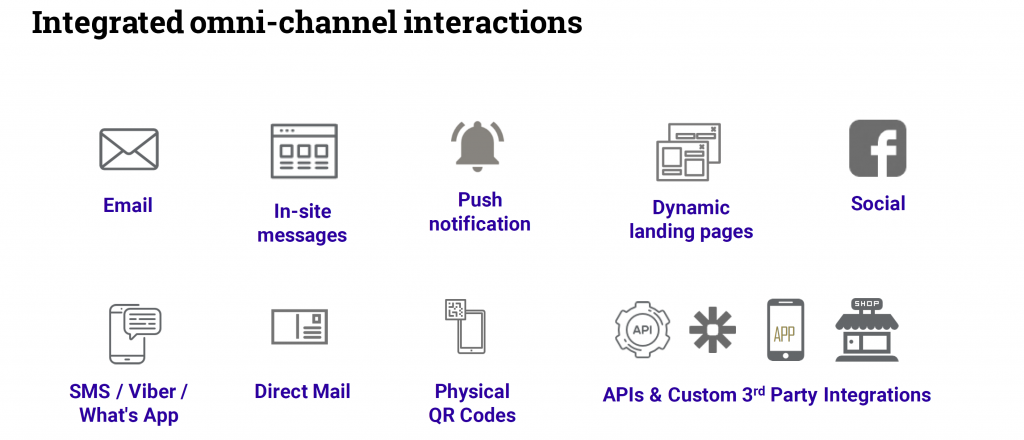
Customers interact with businesses over various channels — online searches, social media, phone calls, chats, etc. — making it difficult for a company to synchronize the channels to get a consistent view of customers, not to mention tailoring a personalized experience with each. Therefore, omnichannel customer engagement is necessary for any business dedicated to intentional interactions with customers and it is very important to watch out for upcoming omnichannel retail trends to help your business grow. Companies like ContactPigeon have made it their business to work with retailers to implement this trend effectively.
2. Integrated Customer Data

Customer data integration (CDI) keeps a current record of customer information across a business’s platforms and channels. Integrated customer view has proven to improve sales and customer service (as employees can use the stored data to understand a customer’s specific concerns better).
For example, Domino’s Pizza created AnyWare to serve as a single point for tracking orders from smartwatches and uses this information to improve overall business performance.
3. Virtual Fitting Rooms

Virtual fitting software allows retailers to create custom-sized charts enabling customers to find sizes and style profiles that best fit the customer’s needs. This technology is especially beneficial for apparel companies, granting customers the ability to “try on” and purchase clothing without having to leave the comfort of their homes.
Big retailers like Macy’s and Adidas are taking advantage of it with positive results. According to virtual fitting room software company Zeekit, their services have effectively reduced retailers’ return rates by 36%.
4. Livestreaming

In-person shopping is a valuable part of the shopping experience. Yet, with recent social distancing guidelines and stay-at-home orders, buying products from brick-and-mortar storefronts is not always possible. That is where live-streaming shined in 2020, with services like Amazon Live and Popshop Live being perfect examples.
The Interactive Advertising Bureau predicted that Livestream-generated sales would reach $120 billion worldwide in 2021.
Why is that so? As much as digital customers value purchasing a quality product, they also want to be connected to a company. Livestreaming allows them to show up without being physically present while experiencing the product through another host. Companies use live-streams to demonstrate how a product works, answer customer questions, and launch new products in real-time.
5. Integrated Loyalty Program

Any business owner knows loyalty is key, and a loyalty program proves to be an effective method of building relationships with customers.
Swimwear retailer Cupshe is an example of a company that found success with an integrated loyalty program. In just three months, the brand increased customers’ spending by 53% and boosted the repeat purchase rate by 42%.
6. Total Experience
This business trend combines multi-experience, customer experience, employee experience, and user experience to solve complex business challenges.
Gartner uses the example of a company starting an online appointment system to highlight this trend’s effectiveness. When customers reached a certain distance to the store, a notification was sent to their phones, guiding them through check-in protocols. Employees could then use a tablet to guide the customer through the process without touch or physical interaction — something particularly helpful during a pandemic.

Emerging physical retail technologies
For businesses that continue operating in-person, its owners must know what technology is used in retail stores to continue operating safely and effectively in the current times while also ensuring future growth.
1. In-Store Customer Analytics
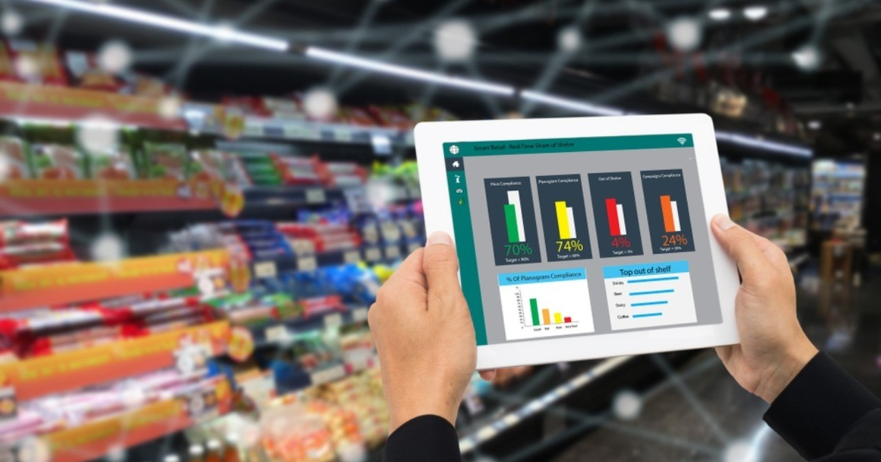
Gathering in-store analytics is gathering information from customers’ behavior while visiting a storefront. Analytics includes noting things like the number of visits per time of day, the volume of new and returning customers, and how different advertisements affect customer visits.
Such technology, such as Cisco’s Merakis helps retailers better understand how customers behave in-store and allows retailers to make more informed decisions and create a more intuitive in-store shopping experience.
2. Cashierless checkout
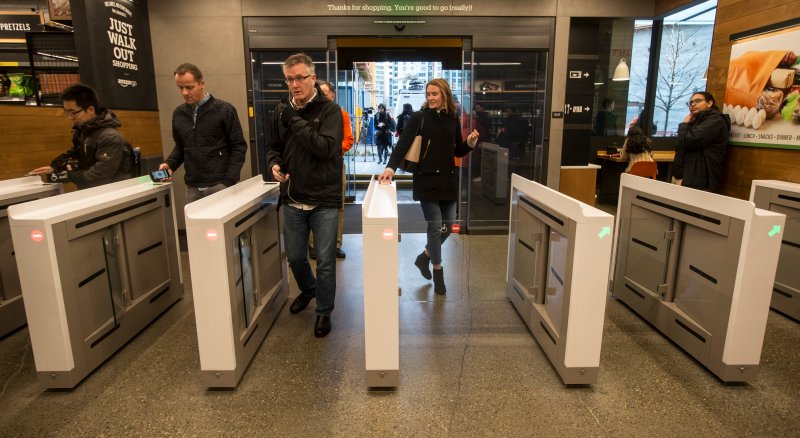
When the human touch is as limited as possible, it greatly benefits retailers to utilize as many touch-free practices as possible. For this reason, Amazon has begun selling cashierless checkout technology to other retailers.
This specific technology uses an app and sensors to scan each item that a customer picks up. Once the shopping is complete, the customer can walk out of the store knowing that her credit card will be charged automatically. There’s no need to wait in a long line or have a cashier touch any customer’s products, guaranteeing a cleaner and more convenient retail experience.
3. Two-way QR Codes
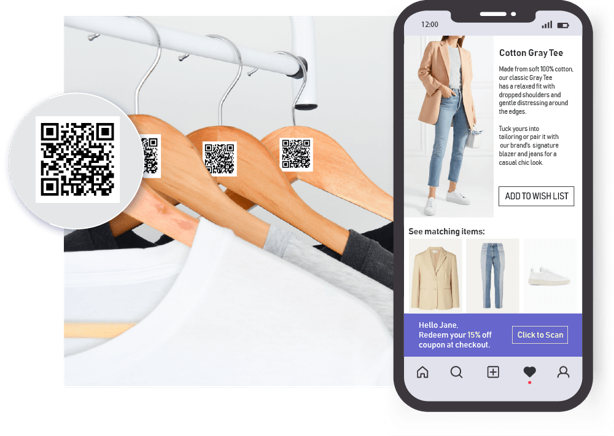
It’s predicted that, by 2022, redeeming coupons by QR code will surge to 5.3 billion, meaning that this is a technology trend well worth taking advantage of.
Two-way QR codes, patented by ContactPigeon, benefit retailers with their versatility and enhance customers’ overall shopping experience while collecting data on customers’ behavior at the same time.
Rather than simply scanning a QR code to receive standard information, the 2-Way QR code provides a more interactive experience by returning information relevant and specific to the scanner. For example, a customer who scans the QR code may receive personalized product recommendations based on his last interaction with the retail brand.
4. Touch-free Technology
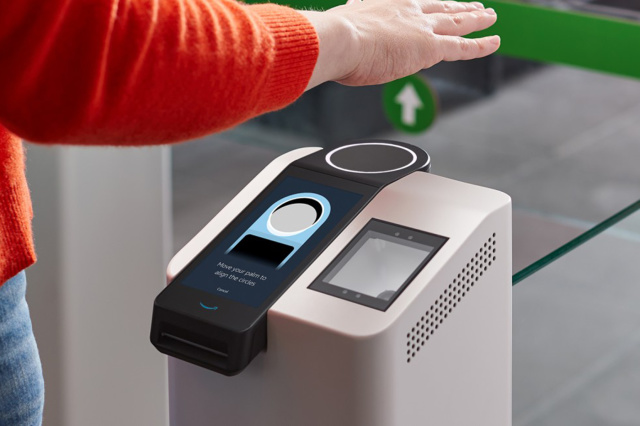
Though the need for maximum safety and cleanliness led to a boom in the use of touch-free technology in 2020, this trend appears to be here to stay.
Motion and gesture-based technology, along with voice and facial recognition features, boast benefits such as better hygiene and accessibility for a broader range of patrons, including those who are differently-abled.
For example, multi-brand retailer Showfield developed an app called Magic Wand that lets customers interact with each part of the store without having to touch anything, and PayPal QR codes are yet another way companies can conduct business with reduced or eliminated touch.
5. Artificial Intelligence/Hyperautomation

Gartner defines Hyperautomation as the idea that anything within a business that can be automated should be automated.
Though it may be tempting to cling to “old-fashioned” methodology, speed, efficiency, and agility have long been linked to business success. Automation brings each of these components to the table. This includes implementing technologies such as Robotic Process Automation, Intelligent Business Management, advanced analytics, and artificial intelligence.
Artificial intelligence (AI) is expected to take the digital space by storm, and luckily for business owners, its benefits will be far-reaching in the retail space. The use of AI makes the shopping experience more convenient for customers and cost-effective for businesses.
For instance, AI can provide instant support for customers, directing them to a product’s exact location in-store while suggesting related items that may interest the consumer. AI can also provide access to a broader inventory, perhaps including items not currently available in the physical location.
Tip: check our 20 Brick and mortar marketing strategies that (actually) work to learn more about using digital and technology for your in-store activities
Technologies underlooked in retail
How has technology improved retail? Short answer: convenience. Retail shopping used to require human interaction of some sort. While interpersonal communication has proven to play a crucial role in one’s overall well-being, it doesn’t always make for the quickest, cleanest, or most efficient shopping experience.
However, we don’t just have technological trends developed in 2020 to thank for a new and improved shopping experience. Pre-existing technological trends have changed the retail industry for the better, and many do not often get the credit they deserve. A few worth highlighting include:
1. QR codes
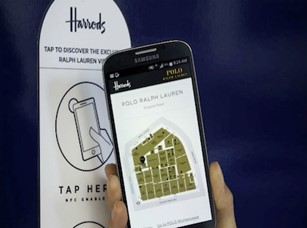
Though the trend was not as well-received as businesses hoped when it was first introduced, Apple’s iOS update that allowed users to scan a QR code directly with the camera made it more convenient for customers to adopt. Some may be wary of utilizing this digital trend given its age; however, the sheer convenience has kept QR codes relevant for years.
QR codes can have many retail applications, from providing instructions or product information for customers to linking straight to the business’s webpage. The margin for error is minimal as customers no longer need to input any info. There’s no chance of a customer typing in an incorrect URL or ending up on a competitor’s site, as the digital barcode will direct customers to the assigned landing page every time. Just be certain any link a QR code directs users to is mobile optimized, so consumers will find the feature worth using.
A QR code link also eliminates the need for print-based marketing. A print flyer or brochure has limited real estate for information, but a QR code that leads customers directly to a target landing page can provide all the information needed. By eliminating paper advertisements, QR codes effectively cut down on unnecessary costs to boot.
2. On-Demand Manufacturing
According to the National Retail Federation, on-demand manufacturing is expected to make a comeback in 2021. Today’s shopper values sustainability and zero-waste, and creating products only as orders are placed is an effective way to cater to those needs.
You can’t afford to miss these retail technologies
There’s no denying that many are still reeling from the emotional and economic toll 2020 & 2021 brought and likely will continue well into 2023. Consequently, it’s imperative for retail businesses to make the most of the technology available to them.
Accordingly to Yelp, 163,735 businesses have closed during COVID-19 and 60% of them will not be reopening. Unfortunately, the sudden surge of coronavirus left business owners and managers no time to plan or adapt. But now, after having survived the initial waves of the pandemic, there is no better time to use the most impactful and emerging retail technologies to stay afloat in 2023.
Analyzing and investing in the above technological trends, retail business intelligence tools (and more) is worthwhile in the long run, especially if one or more of these tools stands between a business and a permanent closure.
Despite the way COVID-19 drastically altered the retail experience last year, thriving in this “new normal” is, in fact, possible. A combination of developing reliable partnerships, utilizing top technological trends, and cultivating a strong company culture will pave the way back to economic success, profit, and growth.

Let’s Help You Scale Up
Spending time on Linkedin? Follow us and get notified of our thought-leadership content:

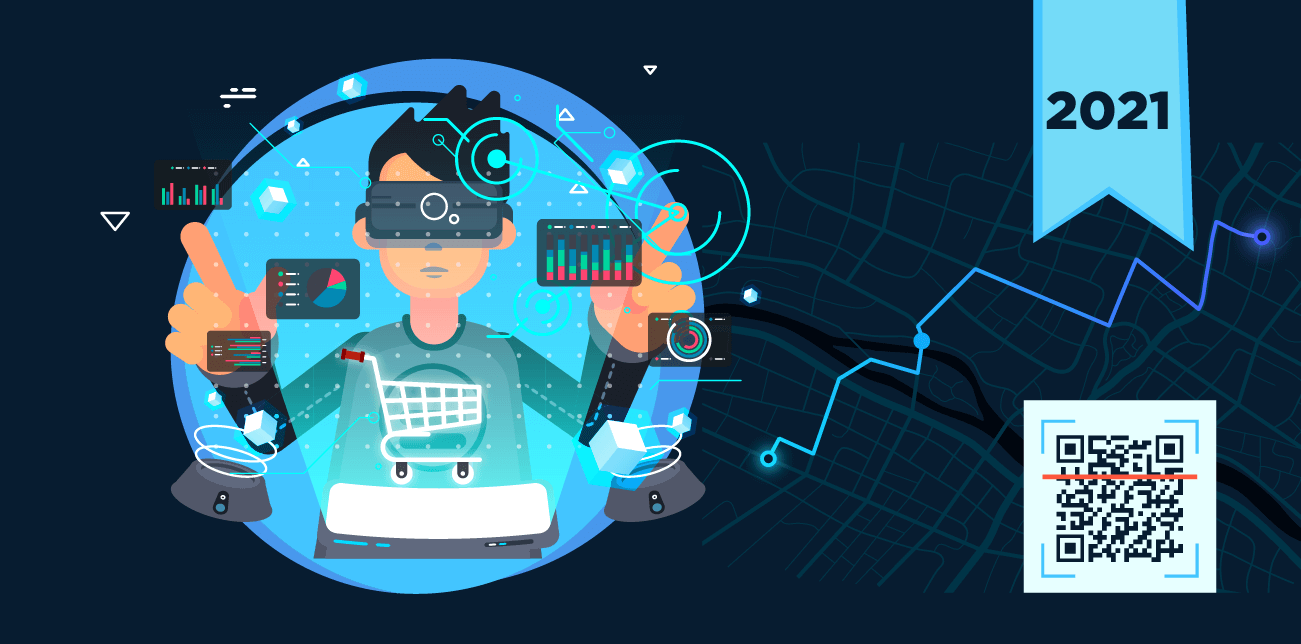

![Benchmarking Growth Strategies of Top Fashion Retailers [Study]](https://blog.contactpigeon.com/wp-content/uploads/2025/11/top-fashion-retailers.jpg)